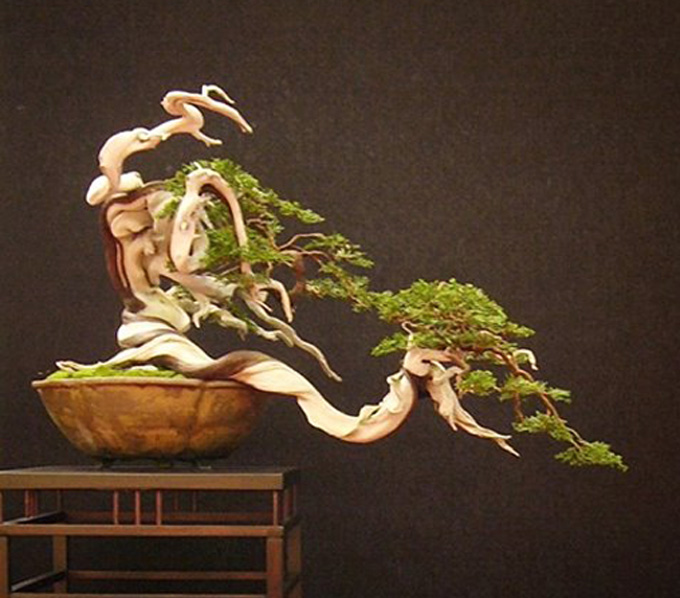 Snakes. From Estação Bonsai on Facebook. I couldn’t find any mention of the artist and even though I don’t like to show trees without attribution, just couldn’t pass this one up (there’s another from Estação, below).
Snakes. From Estação Bonsai on Facebook. I couldn’t find any mention of the artist and even though I don’t like to show trees without attribution, just couldn’t pass this one up (there’s another from Estação, below).
The old rules of bonsai, if they ever really existed, were broken as soon as they were made and the trend only gets more outrageous (in whatever sense you prefer: out·ra·geous: shockingly bad or excessive, wildly exaggerated or improbable, very bold, unusual, and startling).
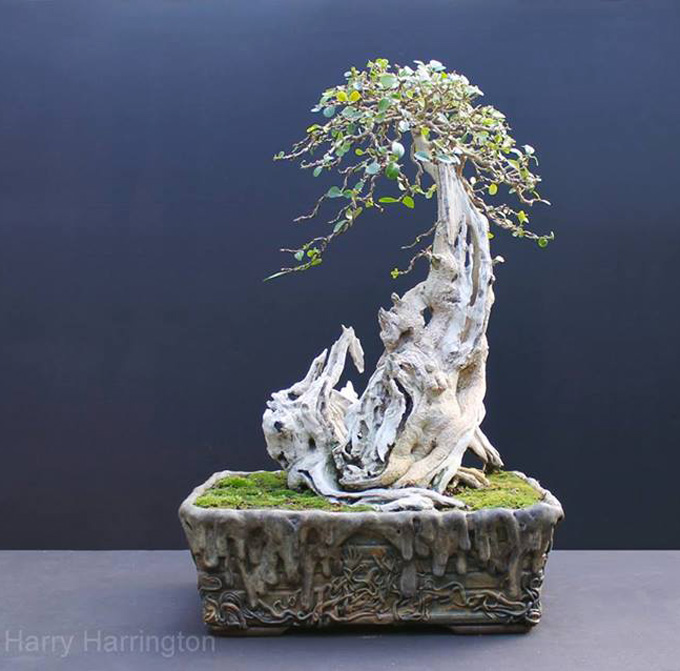 As you can see, this common Privet (Ligustrum ovalifolium) belongs to Harry Harrington (Harry on facebook and Harry’s famous website). It was developed from an old hedgerow tree collected in 2004. At the risk of stating the obvious, it’s the way the pot (
As you can see, this common Privet (Ligustrum ovalifolium) belongs to Harry Harrington (Harry on facebook and Harry’s famous website). It was developed from an old hedgerow tree collected in 2004. At the risk of stating the obvious, it’s the way the pot (by Plilippe Torcatis by Victor Harris) and the base of tree play together that gives this one its cachet. BTW: there’s no sign of any live veins on the trunk. Must be hidden in back (We’ll not completely… see Andy Rutledge’s comment below)
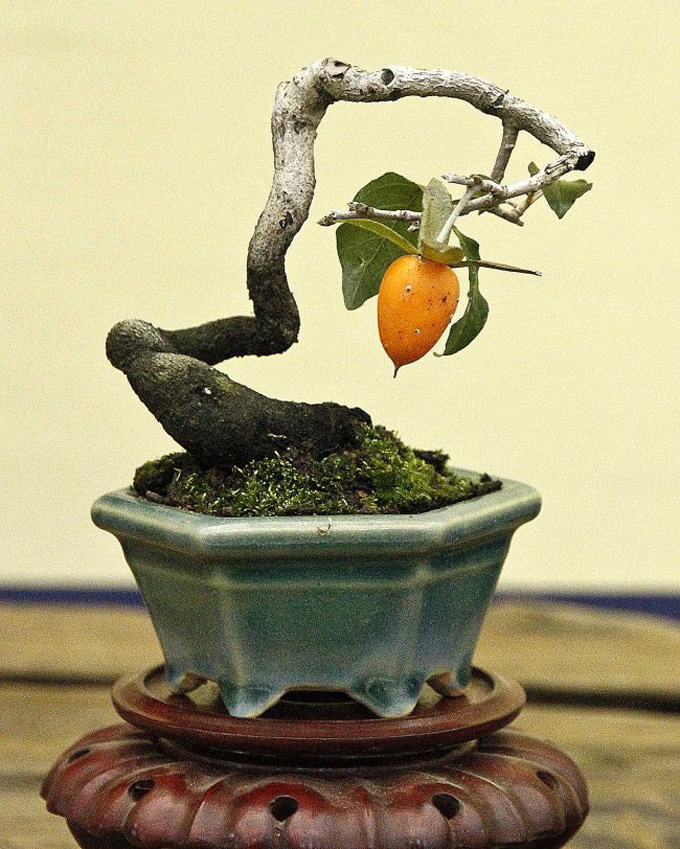 This lonely persimmon is from the recent Taikan Bonsai Exhibition. I borrowed the photo from Bill Valavanis, who was there (Bill is everywhere) and who took the photo, along with a whole bunch of other photos. In any case, I’m scratching my head a bit about this one, though knowing how much Japanese people appreciate fruit and flowers on bonsai, I guess you could say it’s about being touched by fleeting beauty. Something like that.
This lonely persimmon is from the recent Taikan Bonsai Exhibition. I borrowed the photo from Bill Valavanis, who was there (Bill is everywhere) and who took the photo, along with a whole bunch of other photos. In any case, I’m scratching my head a bit about this one, though knowing how much Japanese people appreciate fruit and flowers on bonsai, I guess you could say it’s about being touched by fleeting beauty. Something like that.
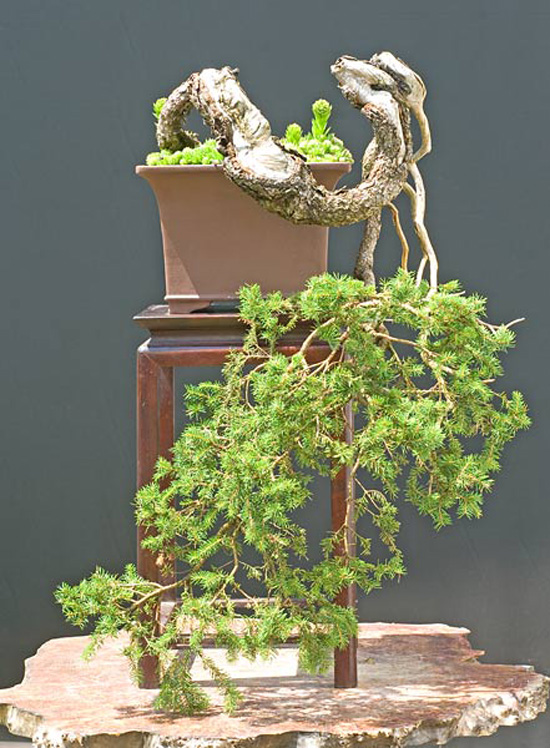 This collected Norway spruce (Picea abies) belonged to Walter Pall when this photo was shot. I don’t think Walter considered it styled at this point, but there’s something about its flowing naturalness that I like. Walter traded it Mauro Stemberger who said, according to Walter, that “he wanted to ‘Italianize’ it and he did. Together with his friend he worked of three hours and the result (below) speaks for itself.” BTW: we featured Mauro’s bonsai just a few days ago.
This collected Norway spruce (Picea abies) belonged to Walter Pall when this photo was shot. I don’t think Walter considered it styled at this point, but there’s something about its flowing naturalness that I like. Walter traded it Mauro Stemberger who said, according to Walter, that “he wanted to ‘Italianize’ it and he did. Together with his friend he worked of three hours and the result (below) speaks for itself.” BTW: we featured Mauro’s bonsai just a few days ago.
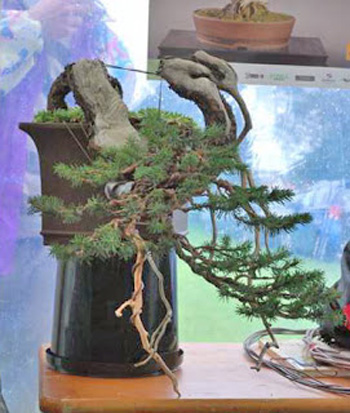 The Spruce from just above, that belonged to Walter and now belongs to Mauro. Tamed a bit now.
The Spruce from just above, that belonged to Walter and now belongs to Mauro. Tamed a bit now.
 Not a great photo, but a remarkably unusual tree. Like the one at the top of the post, it’s from Estação Bonsai and also unattributed.
Not a great photo, but a remarkably unusual tree. Like the one at the top of the post, it’s from Estação Bonsai and also unattributed.
All of these trees adhere quite nicely to the rules of bonsai (which are merely the rules of artistry). Not sure what’s so outrageous about any of these specimens. Mostly, these are bunjin in character (even the Picea, though it is unrefined).
Note, also that the live vein of the Privet (#2) is right in front and curves around to the right/back side. Light bark.
And with respect to Brent Walston, those in his article are not the rules of bonsai. They are some good guidelines for artistic success, but are largely arbitrary (which is okay for those trying to get a handle on artistry!)
Thanks Andy,
Yes. I know there aren’t really rules. Even if they’re were, who would enforce them?
And yes, even guidelines are questionable. I’ve heard that the old Japanese masters (exceptions?) didn’t really bother with such things until Westerners started asking for them.
And, now that you mention it, I can see the live vein. In fact there might even be more than one.
The two bonsai from Estação Bonsai are definitely outrageous – bold, unusual and startling! I think I prefer the Picea when it belonged to Walter Pall (despite needing styling).
I agree with Ann. The “pre- Italianized” tree has more beauty and harmony. It needs work of course to reveal it’s full potential.
Hi Ann,
Thanks and I hear you on the spruce. But then when trees are first cut back, especially so radically, they’re not always at their best. So let’s wait and see what Mauro comes up with in a couple years.
The first sabina juniper you mention is from Patrick Cremers. Great tree!
Hi. The privet’s pot was made by Victor Harris, from Erin Pottery. And you can see the life vein from the front, but this picture doesn’t show it that well. Here’s a better view of the pot and the base of the tree: https://www.facebook.com/photo.php?fbid=10151791558368456&set=pb.681903455.-2207520000.1386853262.&type=3&src=https%3A%2F%2Ffbcdn-sphotos-a-a.akamaihd.net%2Fhphotos-ak-frc3%2F977399_10151791558368456_639291289_o.jpg&smallsrc=https%3A%2F%2Ffbcdn-sphotos-a-a.akamaihd.net%2Fhphotos-ak-ash3%2F600906_10151791558368456_639291289_n.jpg&size=2048%2C1197